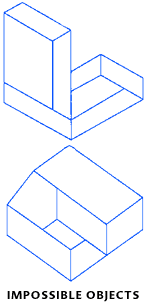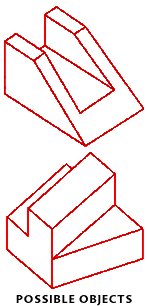

SEEING TO KNOW:
Visualization in psychology
MANY PEOPLE THINK better visually than they do verbally, or at least respond more clearly
to visual stimuli. Some scientists say their greatest achievements grew from the spatial relations
and transformations they saw in their imagination. Two well-known cases are Friedrich Kekule's
famous dream of the benzene molecule as a coiled-up snake eating its tail and James Watt's
visualization of the separate-condenser steam engine. Albert Einstein remarked that
he arrived at
the theory of relativity by "visualizing...effects, consequences, and possibilities" through "more
or less clear images which can be voluntarily reproduced and combined." (1) A visual thinker herself, Lynn A. Cooper has been studying visualization for more than 20 years. Cooper, who holds appointments as professor of psychology in both Arts and Sciences and the neurology department/Sergievsky Center at Physicians & Surgeons, is using neuroimaging techniques such as PET scans, along with more traditional behavioral techniques, to determine on a cognitive level how the mind represents objects and their relations in the external world.
In early experiments, Cooper and Stanford's Roger Shepard demonstrated that people can carry out mental transformations analogous to physical processes. Subjects compared unfamiliar visual structures in different orientations and determined whether the objects also differed in shape. From data on decision times and orientation angles, as well as subjects' reports, Cooper and Shepard concluded that the mind could perform "mental rotation" on the images.
Cooper's current work explores more directly how our minds represent transformations on objects in space by asking observers to view an object moving on a computer screen for a few seconds. The screen then goes blank for a while, then the object reappears. The observer must judge whether the object reappears at the correct location on the trajectory it would have followed if it had kept moving during the blank period, much like an outfielder who loses sight of the ball and runs to catch it. Cooper found that while observers commit some systematic errors, the mind is still impressive at reconstructing the trajectory without actually seeing an object move.
 Cooper and another collaborator, Daniel Schacter of
Harvard, have been studying a different aspect of
visualization--how memory encodes and retrieves information about visual objects--and
attempting to discover the underlying neural structures and processes. Their subjects study
drawings of unfamiliar structures: objects that could and could not exist in the 3-D world.
Subjects are then asked to recognize whether objects were shown earlier, or whether they are
"possible" or "impossible." These two kinds of memory tasks ("explicit" or conscious
remembering and "implicit"or non-conscious effects of prior exposure, respectively) yield
different results when certain variables change. Cooper and Schacter have inferred that
dissociable underlying systems support visual memory; one system is specialized to code an
object's global structure and another to code its meaning, function, and properties such as size
and color. Recently Cooper and other colleagues have obtained evidence from PET scanning
studies that implicit memory tasks activate specific brain areas, suggesting neuroanatomical
localization of information on the structural coherence of visual objects.
Cooper and another collaborator, Daniel Schacter of
Harvard, have been studying a different aspect of
visualization--how memory encodes and retrieves information about visual objects--and
attempting to discover the underlying neural structures and processes. Their subjects study
drawings of unfamiliar structures: objects that could and could not exist in the 3-D world.
Subjects are then asked to recognize whether objects were shown earlier, or whether they are
"possible" or "impossible." These two kinds of memory tasks ("explicit" or conscious
remembering and "implicit"or non-conscious effects of prior exposure, respectively) yield
different results when certain variables change. Cooper and Schacter have inferred that
dissociable underlying systems support visual memory; one system is specialized to code an
object's global structure and another to code its meaning, function, and properties such as size
and color. Recently Cooper and other colleagues have obtained evidence from PET scanning
studies that implicit memory tasks activate specific brain areas, suggesting neuroanatomical
localization of information on the structural coherence of visual objects.
Visualization also has helped Cooper interpret data from some of her experiments. She and Shepard asked observers with different capacities for color vision to judge the similarity between pairs of color names. The investigators converted the responses into distances, using multidimensional scaling techniques, and obtained a 2-D spatial representation of the sets of judgments. "Those visual images formed our data on how observers with different degrees of color-anomalous vision visualize color similarities," she notes. "It was an impressive example of how visualization of data can help to interpret research on visualization as a human activity."
-
Quoted in Cooper, Lynn, and Roger N.
Shepard, "Turning Something Over in the Mind," Scientific American, December
1984, p. 106.




